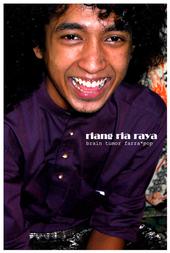Message |Add |Comment
nikon oh nikon
make it wear it love it.aha.Im Arif.U guys can call me Arif or foo.
I am what i am and u should never label me u can label me whatever u want but i dont give a fuck.
u guys
back off___________________________________________________________
INDIE MUSIC SCENES
"Scenes" are localized music-oriented communities that exist in many cities, especially in the U.S. and Canada.
These have existed for decades now, in one way or another, but it is now commonplace for a city or town to have a punk scene,
a metal scene, or many other scenes based on other forms of art. Indie music scenes became important in the early 1980s,
when the rest of the country caught up with punk rock music from New York and London. Scenes are important in keeping
indie and punk rock fresh and inventive, because it allows people from a wide audience to hear new independent music and
contribute their own talents to it. Obviously, depending on what town one is in, the feel of the scene
(and therefore the music that comes out of it) may change significantly.Arguably, the 1980s indie scene in Washington D.C. was pivotal in changing the outcome of punk and indie
rock for decades to come. Bands like Minor Threat, the Bad Brains, Fugazi, and Rites of Spring helped to shape
the sound of underground music for years to come. Los Angeles was important around this time as well, producing bands
like the Descendents, Bad Religion, and Black Flag.Around the mid-1980s, as punk and New-Wave's mainstream influence died down considerably,
there rose a couple of other important movements. Minneapolis was very important around this time.
Bands like Husker Du, and the Replacements would influence many alternative bands after them.
People involved in these bands, such as Bob Mould and Paul Westerberg still contribute to the music scene today.
During the late 1980s in the Bay Area of California, bands like Operation Ivy, Green Day, The Offspring, and later,
Rancid would take form to give a new sound to punk rock. On the opposite end of the country, Frank Black, Kim Deal,
and Kristin Hersh were forming bands like the Pixies, Throwing Muses, and eventually The Breeders.
These bands would influence the next wave of alternative rock, which due to the massive mainstream
success of grunge became divided into mainstream artists and a new wave of indie rock bands who
rejected the mainstream in favor of the indie scene.
